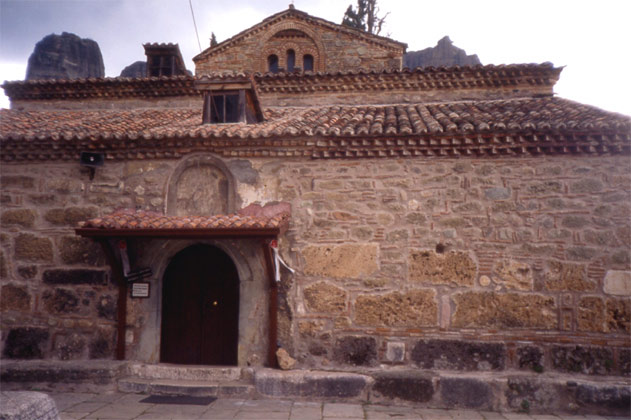ΚΑΛΑΜΒΑΚΑ |
KALAMBAKA
The almost eerie stone rocks of Meteora, Kalambaka embracing is Preserved and Protected Monument of Humanity by UNESCO and the largest monastic city of the country after Mount Athos. At a distance of about 25 km. Town of Trikala, the formulations of "tectonic horn" at geologists, created between mountains Koziakas Antichasion before about 30 million years when the sea covered the area began to subside, and parasernontas stacking rocks on the seabed, which over the years have stabilized. Just to see the stone blocks wrapped in fog and you will understand what led the monks to look here before 1000 years of isolation. Today, the numerous monasteries of Meteora operate only six: St. Nicholas Anapafsas Transfiguration or Great Meteoro, Varlaam, Roussano, Holy Trinity and St. Stephen. The nearby town of Kalambaka is simultaneously organized tourism attraction, with decent hotels, apartments and camping and climbing destination world (or the Doupiani Ntoupianis is the most famous climbing area and the chapel of the Virgin at the base was the first worship center organized monasticism). Within the urban sprawl belies traditional woodcarving and icon painting workshops and the most picturesque part is Kastraki, which now joins the city. Kalambaka is ideal for walks in the villages Aspropotamos and Vlach, mostly, villages.
CHURCH OF THE ASSUMPTION OF MARY
The church of the Assumption is a three-aisled basilica with three apses east. The nave is elevated. The aisles are separated by alternating pillars and columns, while the Narthex communicates with the central aisle through tribelon opening. The outer narthex is later.
The initial phase of the existing building has been dated back to the late 11th or early 12th century, mainly based on the dating of the initial phase of the paintings. However, recent studies tend to place the monument around 1000 The discovery of fragments of mosaic floor beneath the floor of the modern church and the architectural elements of the monument, that its architectural form, the existence tribelon, throne and reconstructed by a cop marble pulpit with two staircases led to the hypothesis that the Byzantine church was built on the foundations of an early Christian basilica, which retained the outline.
Inside the church is full of paintings, belonging to two different phases. The oldest layer of painting, dating to the late 11th - early 12th century., Retained fragments on the eastern end of the south aisle. Most of the surviving painted decoration, which was performed by the priest Kyriazis and the Cretan monk Neophytos, son of the painter Theophanes dated 1573 in the same time the church suffered extensive repairs. The wall paintings in the narthex dates from the 18th century.
Author
Krystallo Mantzana, archaeologist, Head of 19th Ephorate of Byzantine and Classical Antiquities
Hours of operation:
Daily except from 13:00 to 15:00
Telephone number: 24320-24962












